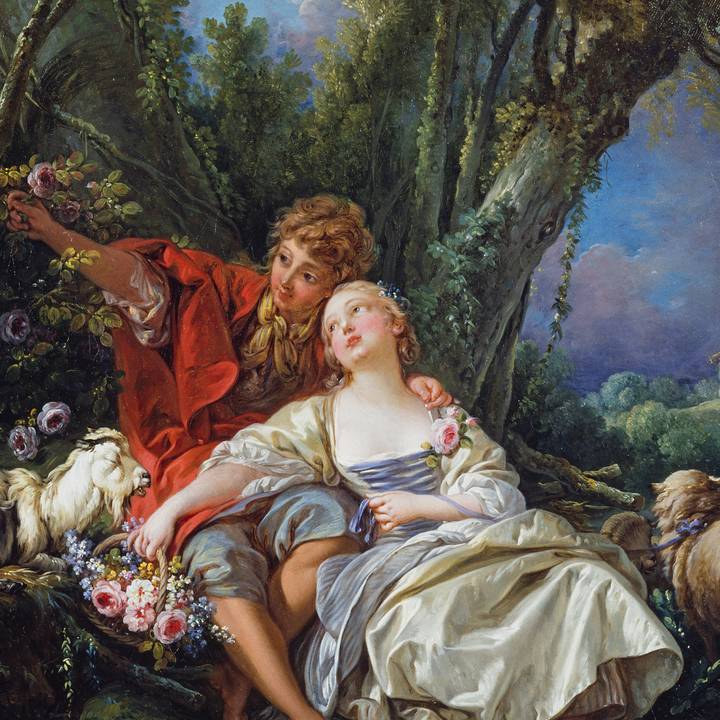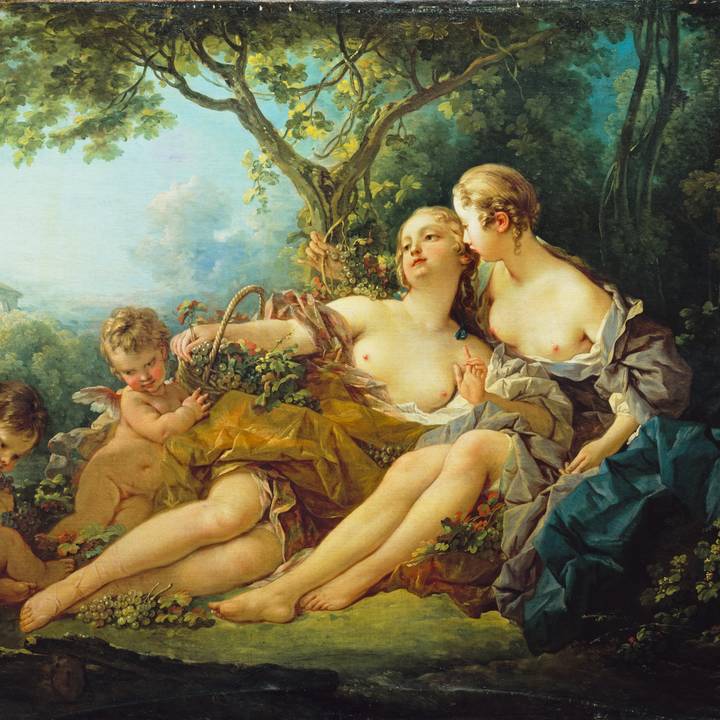Date: probably c. 1754
Materials: Oil on canvas
Measurements: 164.5 x 84.5 cm
Inv. Nos: P432
Though undated, Cupid a Captive was likely painted around the same time as the three vertical mythological panels in Boucher’s ‘Venus Series’ housed in the Wallace Collection. Unlike the Venus-themed imagery in the other three works, Cupid a Captive features a different subject.
Both the technique and composition are slightly distinct, and cleaning of the other panels revealed that Cupid a Captive was originally conceived on a somewhat larger scale than the other paintings. In the nineteenth century, however, the width of each was extended to unite them as a cohesive cycle for a decorative screen acquired by the 4th Marquess of Hertford.
This painting is notable for its focus on Cupid without Venus, illustrating a scene from one of Anacreon’s Odes, where Venus is unable to reclaim her wandering son, Cupid, who willingly remains a captive of the Graces. The Graces embody three stages—chastity, desire, and consummation—reflecting the progression of love in a refined society, in contrast to the uninhibited desires shown by the young Cupid.
The Graces were previously depicted educating Cupid in Boucher’s earlier work from the 1730s, Cupid and the Graces.
While this piece represents a mature exploration of this lofty theme, it had begun to feel outdated to salon audiences, who were either unaware or uninterested in such layered symbolism, instead reacting to the prominent display of nude forms.
Boucher’s approach was soon eclipsed by new aesthetic and moral directions, as seen in works like Jean-Baptiste Greuze’s La Lecture de la Bible (1755, Louvre), which signaled a shift away from Boucher’s allegorical mythologies.
Despite this shift, Cupid a Captive showcases Boucher’s continued mastery in his fifties, revealing his skillful execution.
A recent cleaning has uncovered the pastel tones that had been hidden beneath layers of yellowed varnish. Infrared photography also shows Boucher’s subtle adjustments, like the removal of a background tree on the right to preserve the composition’s clarity.
The delicate silhouette of a Grace in shadow at the foreground guides the viewer’s gaze to the brightly illuminated Cupid at the center, demonstrating Boucher’s expert use of light and shadow.
His later mythological works, including many tapestry designs and larger decorative projects, reveal an increasingly fluid and painterly technique.
Text adapted from Hedley, J., Francois Boucher: Seductive Visions, London, 2004.



